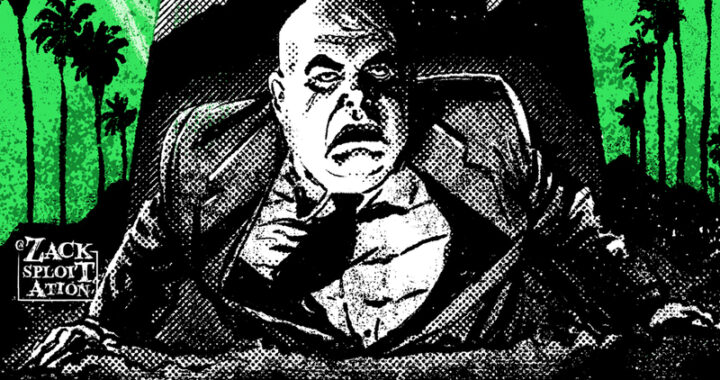
The Devil’s Advocate: The Devil in the Details, Part 1
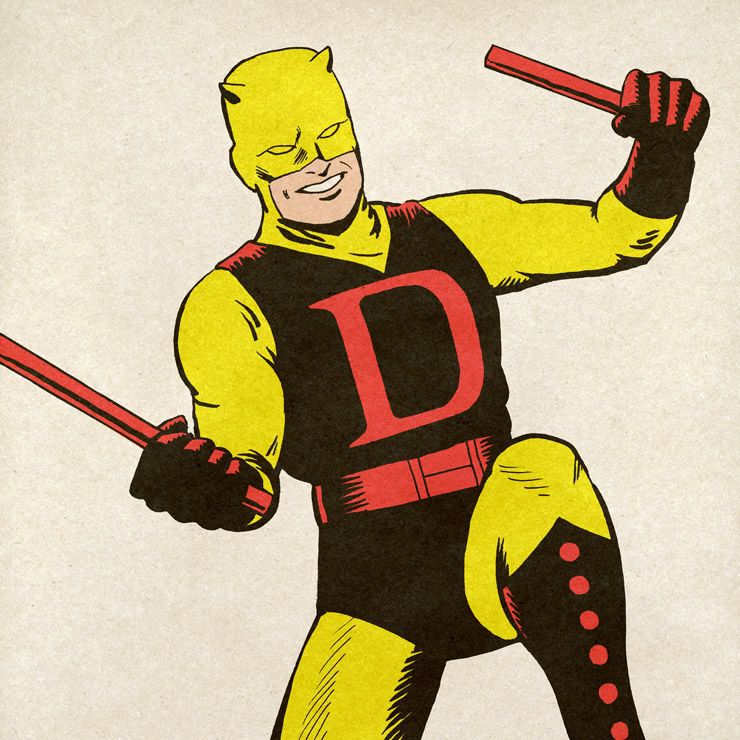 Introduction
Introduction
Not too long ago, I was asked to cover the history of Marvel’s Daredevil for the Omen Revelations Podcast for Omen Comics. Since I consider myself reasonably familiar with the history of the character and I love talking about Daredevil, I was glad to do that.
By the end of the process, I’d worked up a whopping 16 pages of notes on Daredevil. This is far more material than I typically put into any of my podcasts. However, I wanted to be thorough in covering every major era of the character, which includes runs as diverse as Gerry Conway’s, Ann Nocenti’s, and Karl Kesel’s, all the way to the Marvel Knights era, the Mark Waid run, and even the Chip Zdarsky run. There are a few blind spots in my coverage (I will admit to not having read that much of Charles Soule’s run), but generally the discussion was meant to be as comprehensive as I could make it.
However, after compiling all of my detailed thoughts on the character, a problem presented itself to me. I quickly realized that I had far too much information on Hornhead for it all to work as a podcast. Our discussion on Daredevil became excessively long as it was, especially since the podcast also covered the film and the Netflix TV show. So most of my notes on the comic book series were severely trimmed for time constraints.
I understood why cutting all that content was necessary. At the same time, this meant that I was left with a large amount of material on the cutting room floor that no one would get to see. I decided that something needed to be done with that material… but what?
My solution to that is this series of articles. What follows is much of the deleted material that was not used for the Omen Revelations Podcast, which I’ve reworked and reformatted for this piece. Some of this material has even been expanded on for the purposes of discussion, and those points are exclusive to this article. This first part will cover the origins, influences, and evolution of Daredevil, with future installments covering different eras of the character.
Daredevil is a character I’ve always been drawn to, and I hope that shows in the material you’re about to read. I hope you enjoy reading it as much as I did in putting it together.
A Tale of Two Devils
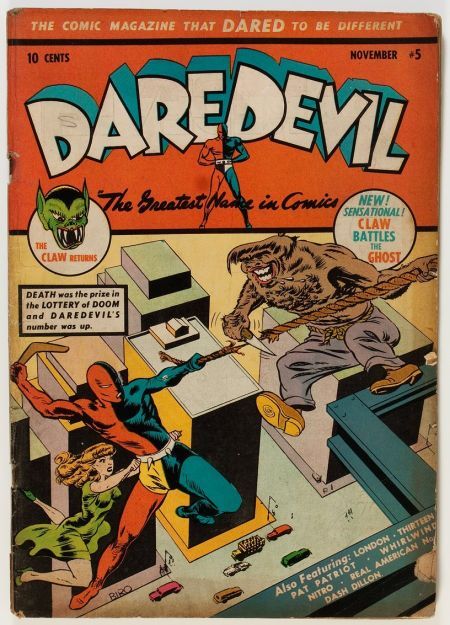
When most people think “Daredevil”, most people think of Matt Murdock, the blind lawyer of Hell’s Kitchen. But there was a Daredevil before him in the Golden Age, one that Stan Lee took the name from and was even slightly influenced by. It’s worth briefly discussing the Golden Age character, not least because he had a direct influence on the Devil of Hell’s Kitchen.
The original Daredevil debuted in 1940, in Silver Streak #6 by Lev Gleason Productions. Like many heroes of that era, he first appeared in a short backup story in what amounted to an anthology title. The original Daredevil was created by Jack Binder and Don Rico. However, Jack Cole eventually came in later to revamp the character, and his influence on the original Daredevil was deep and lasting.
The original Daredevil was Bart Hill, whose origin evolved during the course of publication. Originally, his parents were murdered as a child, and Hill was branded with a boomerang-shaped scar. The trauma of this experience rendered him mute, and he would go on to seek vengeance as Daredevil. Later versions would abandon the mute idea, having Hill be raised by Aboriginal Australians after the deaths of his parents. While somewhat problematic by today’s standards, this version of the origin did better explain core elements of the character, such as his fighting skills, the costume, and his signature weapon, the boomerang.
The Golden Age Daredevil was reasonably successful by the standards of the time, although he’s largely an obscure character today. He made eleven appearances in the Silver Streak title before spinning off into his own series, Daredevil Comics. The original Daredevil appeared for seventy-one issues in that tile, though the series itself would stretch almost twice as long, until it was cancelled in 1956. The character since fell into the public domain. Nowadays, he’s been used by modern publishers, most notably by Dynamite Entertainment, where he’s known as the Death-Defying ‘Devil. However, he’s also made appearances in the work of Erik Larsen, where he appeared in The Next Issue Project as well as Savage Dragon. His public domain status is what first attracted the interest of Stan Lee.
There are some notable similarities between the two Daredevils. Like Matt Murdock, the Golden Age Daredevil was acrobatic and learned fighting skills from another culture. In this case, the culture in question were the Australian Aborigines, as opposed to the ninja. He also had a memorable costume and a signature weapon, his boomerang. It is possible that Matt Murdock’s billy club took some influence from the boomerang, at least in its function as a throwing weapon. Also, the costume of the original Daredevil followed a similar path as Murdock’s, moving from yellow to red over time.
While some of these similarities may be coincidental, Lee knew about the Golden Age character. In a FOOM interview included in Daredevil Marvel Masterworks Vol. 12, Stan Lee admitted that he took the Daredevil name because he liked it and because the character had already fallen into the public domain by then. However, though this is unconfirmed, it is possible that some other elements beyond the name were subtly lifted from Bart Hill and incorporated into his idea for Matt Murdock. The two characters have enough similarities that Bart Hill might have at least had an indirect or unconscious influence, even if Lee and his successors didn’t include those elements intentionally.
Bart Hill was Daredevil decades before Matt Murdock even existed, but trademark issues would complicate the use of the name. Marvel laid a firm claim to the Daredevil name, using it for the Devil of Hell’s Kitchen and establishing a clear brand for their character. Some creators have gotten around this by changing the name, as the Dynamite version did. Still, other versions of the Bart Hill character would use the Daredevil name in the interior of the stories, while avoiding direct trademark issues elsewhere.
The Origins of Daredevil
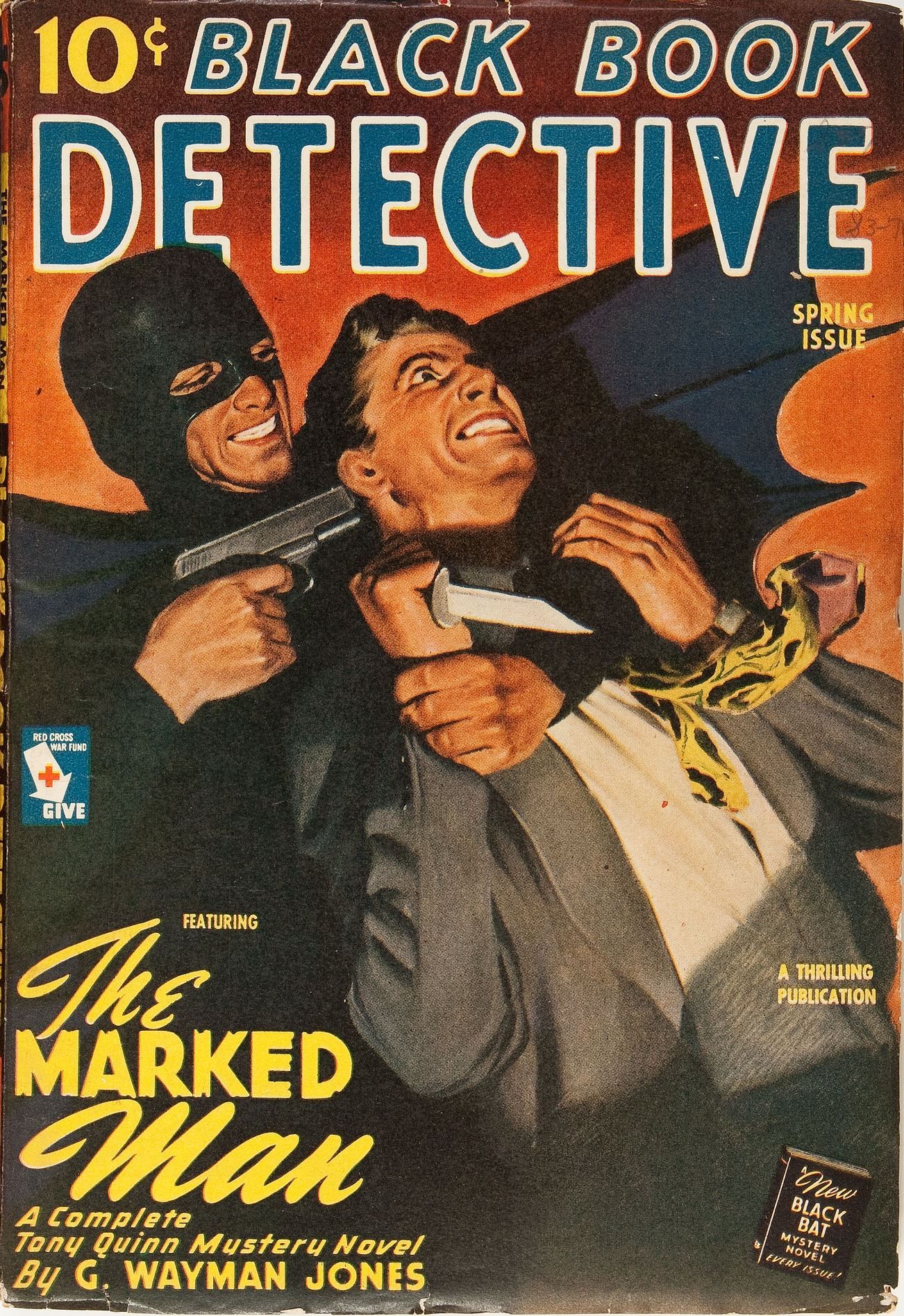
Daredevil was not a truly original character in the sense that it did anything that hadn’t been done before. Where he was revolutionary was what was done with the core idea over the years, particularly under creators like Frank Miller.
Blind vigilantes had existed before in comics, though admittedly, one would have to dig deep to search for them. Nedor’s second Black Bat, another hero from the public domain, was a prosecuting attorney with an origin not unlike the villainous Two-Face; he was blinded by acid splashed into his face by a criminal. Like Matt Murdock, he trained his remaining senses, learning to fight crime without relying on his sight. This Black Bat was a hero who, like Daredevil, was deeply rooted in the pulp tradition and in crime noir.
Stan Lee may well have been aware of this character, even if it wasn’t necessarily a conscious influence on Matt Murdock. However, both the Black Bat and the Silver Age Daredevil draw on the same thematic idea—the concept of blind justice. The basic idea stretches back to the 16th Century and Lady Justice, which itself stretches to Greek and Roman justice goddesses. With the creation of a blind crimefighter, Daredevil stands for impartiality under the law, the idea that the law should apply equally regardless of status. He stands for this principle in both of his identities. As Matt Murdock, he is a lawyer who represents the right to a fair defense. As Daredevil, he battles the criminals that the law cannot touch, bringing the lawless to justice.
According to Stan Lee, he created his version of Daredevil because he was looking for an interesting flaw to give a new hero. Stan created the Marvel Universe with the idea of making it the world outside the window, a world defined by the same ordinary problems that people normally struggle with. He needed a hero with feet of clay, an approach that worked with characters like Spider-Man. However, Stan didn’t want to go through the same motions he did before. He didn’t want to use the same kind of flaws he had used before.
With this approach in mind, Stan decided that he would go with a blind detective, with the idea of the blindness as a flaw he wanted to explore. Stan also wanted to work with artist Bill Everett, best known today as the creator of Namor the Sub-Mariner. Stan started thinking about what kind of job to give DD, and he settled on a lawyer, since that hadn’t been done in the Marvel Universe at that time; She-Hulk wouldn’t come along until 1980. Stan then developed the basic origin idea, with Matt’s father being involved with the mob, ultimately sacrificing his life so that Matt could have a future.
While many of these elements are not that original, Stan wove them together in a way that was unique and memorable. The radar sense is a concept that is unique to Daredevil, as is the billy club weapon. The idea of a lawyer and a fighter as two sides of the character makes Daredevil compelling. The series would also take advantage of the religious imagery of the character, with the Devil persona as a strong contrast to Matt Murdock’s Catholicism.
These core foundations of Daredevil’s character have made him powerful and enduring, even if it took many years to realize his potential. The contradictions of Matt Murdock’s nature—Catholic and Devil, lawyer and liar, swashbuckler and avenger, fighter and legal scholar—allows for many different kinds of stories. He’s also one of the most grounded characters in the Marvel Universe, having only superhuman senses as his power set. Otherwise, he’s a normal man who can be hurt, broken, and even self-destructive. All of these things set Matt Murdock apart from other characters crafted in that mold.
The Evolution of Daredevil
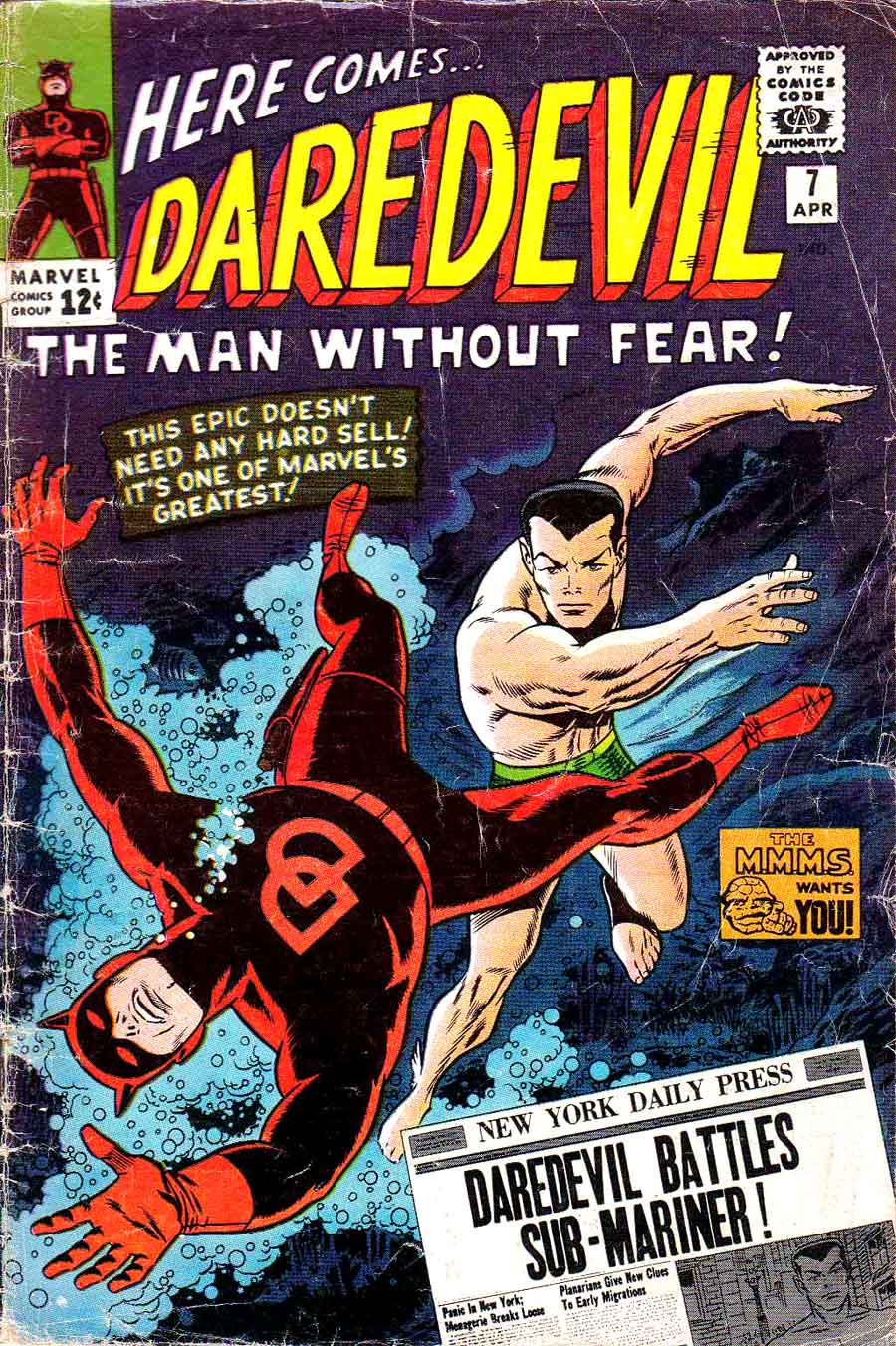
There are a few standout things about Daredevil as a series that make it unique from anything else in Big Two comics. When you put these pieces together, he becomes even more interesting. I cannot think of another character in comics that has been able to do what Daredevil has, certainly not at Marvel or DC.
One point about Daredevil is that he was not a great character out of the starting gate. Although there was a strong skeletal foundation, there was a lot about him early on that just didn’t work. His original costume design was yellow and brown, and that just didn’t hit the right note. It took Wally Wood coming in with Daredevil Vol. 1 #7 to completely redesign the costume before the iconic red suit came into the picture.
That was only the visual design; he had narrative issues to sort through as well. Daredevil had a weak rogues gallery for years and years, at least until Bullseye and Kingpin entered the picture many years later. It is uncommon for any major series to go for over 130 issues without its most important villains, but Daredevil did just that. Bullseye wasn’t introduced until after that, and it took Frank Miller coming in a few years later to perfect the character. The Kingpin was a Spider-Man villain for decades, until Miller brought him in to face Daredevil, at which point Wilson Fisk became Daredevil’s nemesis.
Daredevil’s supporting cast wasn’t fully fleshed out either Some of the puzzle pieces were there, but it took the work of many writers and artists to make Daredevil the great series it is today. Foggy Nelson was always Matt’s law partner, but his role in the series wasn’t as clearly defined. Today, he’s perhaps best described as Matt Murdock’s voice of reason, the person who reins in Matt’s impulsiveness and self-destructive tendencies. That took decades of character development and the work of multiple writers to grasp.
There was also not a clear and convincing love interest for many years, not like with other characters. Karen Page was there first, and she has come to be considered a classic love interest, but that also took the work of later writers to accomplish. Before that, Matt often wandered from love interest to love interest, which perhaps is why he became known for his numerous girlfriends over the years. Even now, new love interests walk in and out of Matt’s life with each new creative team that takes over the title. It took Elektra for Daredevil to become a strong romantic lead, with their doomed romance setting the tone for his future relationships.
All of this makes Daredevil’s incredible creative success a huge achievement unlike anything I’ve seen in comics. This character should not have worked when faced with these issues for so many years of publication. Nevertheless, Daredevil has one saving grace: he’s been consistently well written regardless of who has taken over the character.
Daredevil has never, to my knowledge, ever had a truly bad run or a story considered so bad that it’s permanently damaged the character. Whenever the subject is brought up, most people might point to an event story called Shadowland, which today is pretty much ignored and never brought up again. Aside from that, a “bad” Daredevil run is merely forgettable. Most of his runs range from good to legendary, including some outstanding runs that have defined the character. Even writers who have had divisive runs on other books, like Brian Michael Bendis, have delivered career-high work on Daredevil.
Also, Daredevil is the one major Big Two book where you don’t often see “back to basics” type of regressions when a new creative team takes over. Hulk tends to have this problem often, for example, but you usually never see this in a Daredevil book. The new team on DD typically will build on the work of previous writers, building a new narrative off of what has gone before. The Daredevil you see in Chip Zdarsky’s run is the same one that Stan Lee, Frank Miller, Ann Nocenti, Kevin Smith, Brian Michael Bendis and Mark Waid wrote about. He looks and acts like he’s the same person, even though those writers all had very distinctive takes on Matt Murdock. Daredevil is the most consistent character in mainstream comics, and that’s impressive after almost sixty years of publication.
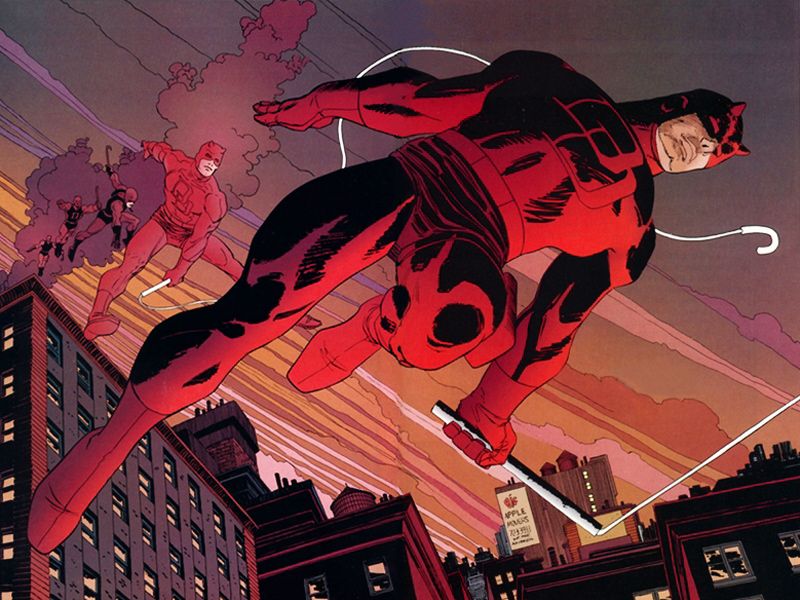
End Notes
In future columns of Devil’s Advocate, I plan to explore the different eras of the Daredevil comic in a loose and general sense. As with this article, they will include expanded and more detailed content, including analysis and fan scholarship of some of these stories. While it would be virtually impossible to talk about every single arc of Daredevil in this series, I hope to talk about the major eras in a way that feels as complete and comprehensive as possible.
In the end, I look at this series as a celebration of one of Marvel’s greatest characters, with the intent of hopefully doing justice to the Devil of Hell’s Kitchen. However, that is a long story with many twists and turns, and that story begins with Stan Lee and Bill Everett. Next time, “The Devil in the Details” will start with the Silver Age Daredevil and gradually move towards coverage of the Bronze Age.
Author Profile
- Steve Sellers had been a fan of superheroes ever since Superman: The Movie. But it took the JSA, the Legion of Super-Heroes, Dragonlance, Lord of the Rings, Twilight Zone, and Chris Claremont's legendary run on the X-Men to make him a writer and a longtime fan of comics, fantasy, and science fiction. Steve is the co-creator of WHITE DRUID & MICHAEL NERO and GUARDIANS OF ELAYIM for Omen Comics, and he is also the creator of BLITZ and SHOCKWAVE for Revelation Comics (an imprint of Omen Comics).








